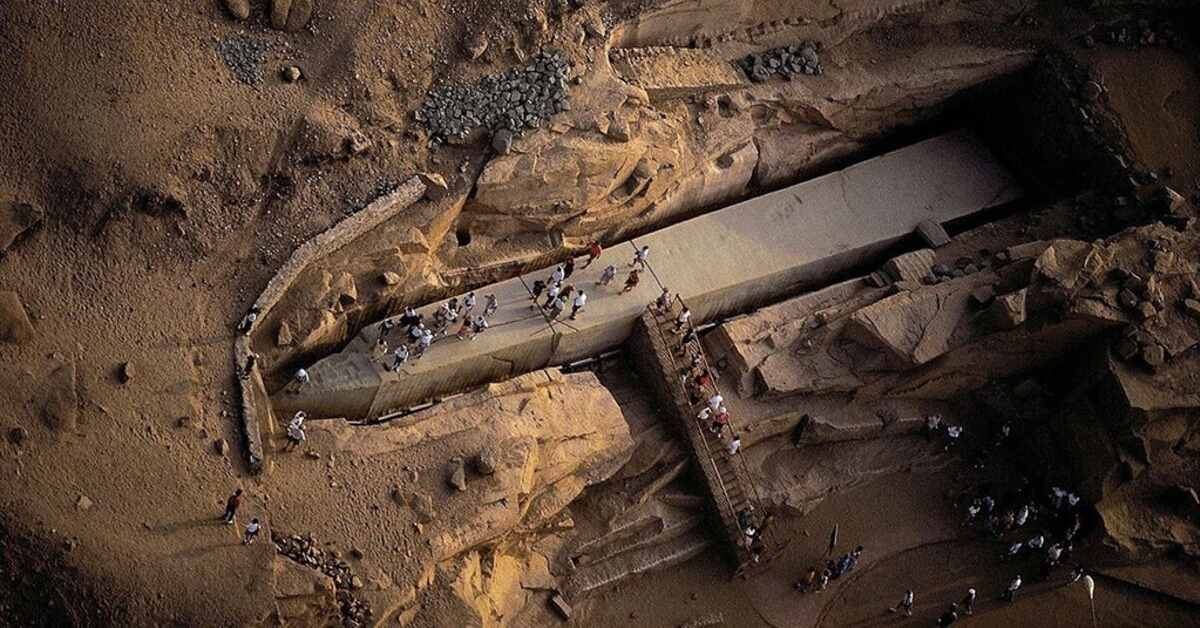Cultural, historical, adventure, and custom customized trips are just a few of the tours that Deluxe trips offer in Egypt and Jordan.

Hidden in the Aswan ancient granite quarries lies one of the most intriguing artifacts of ancient Egypt — the Unfinished Obelisk. Measuring a whopping 42 meters in length and weighing over an estimated 1,000 plus tons, this massive monument was going to be the largest obelisk constructed. However, a crack while it was being carved left it unfinished — still in the bedrock where it was being carved. Nowadays, it is a time capsule into the sophisticated tools, techniques, and manpower that typified Egyptian craftsmanship over 3,000 years ago.
Commissioned by Queen Hatshepsut in the 18th Dynasty (around 1500 BCE), the Unfinished Obelisk would have been the tallest and heaviest of them all. It would have towered above every obelisk of the ancient world. As seen in ancient writings, obelisks were always set up in honor of the sun god Ra, symbolizing a sun ray piercing through the heavens.
That the obelisk was never quarried from its quarry location renders it a rare archaeological discovery, offering insights to researchers on ancient Egyptian construction methods and tools.
One of the most fascinating things about the Unfinished Obelisk is that it remains lodged in the granite bedrock, illustrating how obelisks were once carved out of a single stone. The workers in ancient times pounded out the trench surrounding the obelisk with dolorite balls (a very hard stone). This allowed them to cut out the obelisk from the bedrock piece by piece.
The visitors to the site can observe the chisel marks, which are still present on the surface of the obelisk, and the crack that eventually caused its abandonment. The small details speak volumes about engineering genius, human labor, and the perfectionism of ancient Egyptian builders.
The site is not merely a monument that was left unfinished; it's a glimpse into ancient technology. The Unfinished Obelisk offers:
Evidence of how ancient Egyptians transported and carved gigantic stones.
An insight into the labor organization and size of the workforce.
A demonstration of how a crack would ruin years of effort and lead to project abandonment.
It complements other monuments in Luxor and Cairo by giving a behind-the-scenes look at how the giants were achieved.
The Unfinished Obelisk is located in the Northern Quarry of Aswan, close to the River Nile. Going on a tour to the place is one of the most informative things to do in Aswan.
Visitors can walk around the obelisk, visit the nearby trenches, and learn about the ancient methods of quarrying stone. There are descriptive placards, along with guided tours, to explain the entire tale in detail. Visit early in the morning or late in the evening to avoid the peak of the desert sun.
If you're going to visit the Unfinished Obelisk, why not combine it with other renowned Aswan attractions, such as:
Philae Temple – A stunning temple complex in tribute to the goddess Isis, accessed by boat.
The High Dam – A modern engineering marvel with panoramic views over Lake Nasser.
Nubian Village – A vibrant cultural experience on the west bank of the Nile.
Elephantine Island – A former trading hub with temple ruins and museums.
The Unfinished Obelisk of Aswan never reached the heavens like its completed counterparts in Luxor and Karnak, but its significance is colossal. This mammoth project, abandoned unfinished due to a fatal fissure, stands as a witness to the ambition, resourcefulness, and tenacity of the ancient Egyptian civilization. For any aficionado of ancient history and engineering, the site offers the unbeatable excitement of being present in the very cradle of ancient construction.
Discover now our answers to the most common questions that may come to your mind about tourism and trips to Egypt
Cultural, historical, adventure, and custom customized trips are just a few of the tours that Deluxe trips offer in Egypt and Jordan.
The Dead Sea, Petra in Jordan, the Pyramids of Giza, Luxor's historic temples, and many other famous sites can be expected to be explored with Deluxe Tours.
offer a hassle-free holiday, Deluxe Tours' packages generally include lodging, transport, meals, guided tours with experienced local experts, and entry fees to attractions.
Spring (March to May) and fall (September to November) offer the finest weather for sightseeing and outdoor activities, making those months the best times to visit Egypt and Jordan.
These two countries are close by, only a 1.5-hour flight apart, and when combined, offer a variety of distinctive experiences. We advise you to spend at least 12 days visiting both countries for a truly unforgettable experience
Combining the eclipse viewing with visits to historic sites like the Pyramids of Giza, the Valley of the Kings, and a Nile River cruise are highly recommended.
